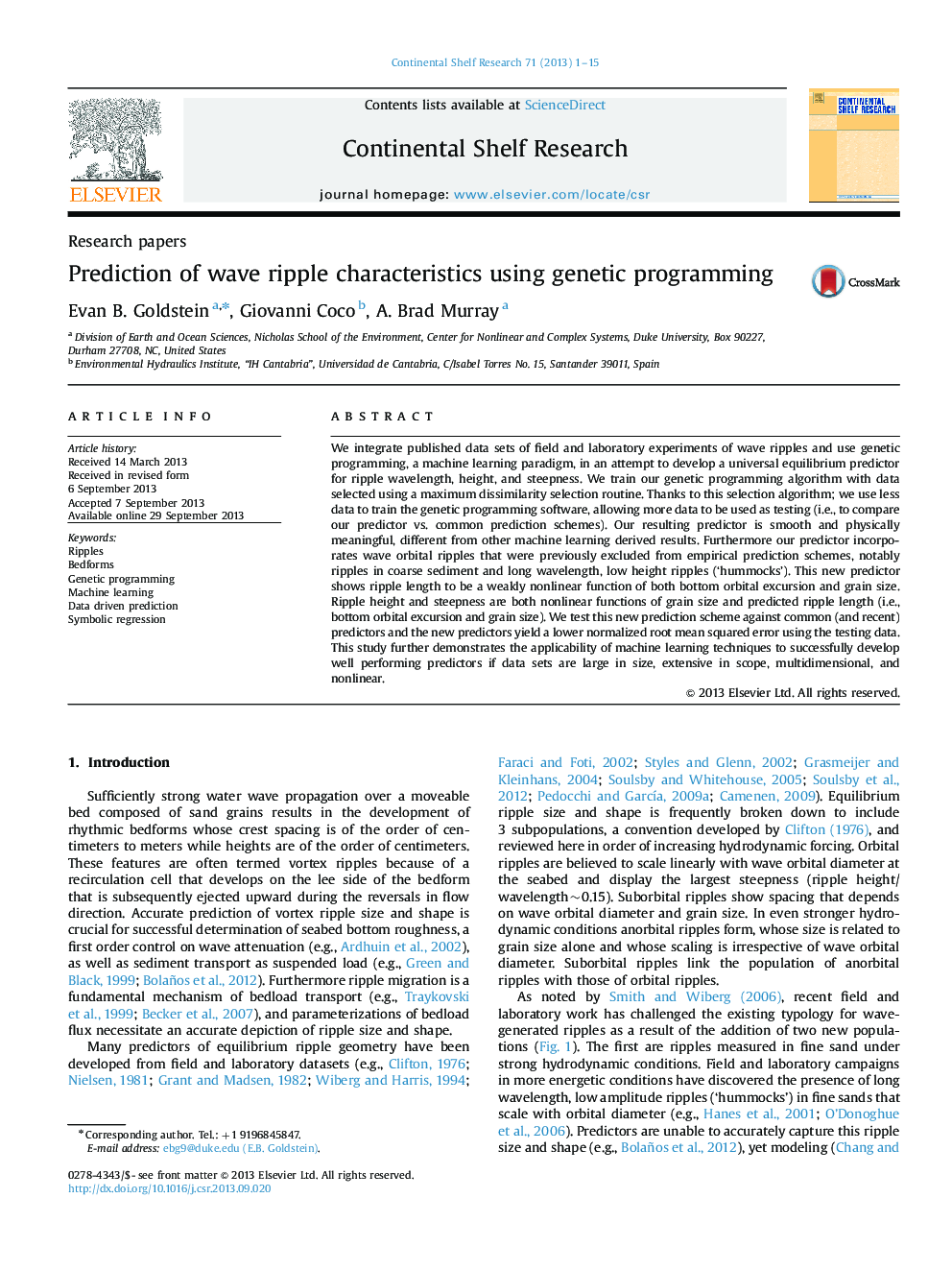| Article ID | Journal | Published Year | Pages | File Type |
|---|---|---|---|---|
| 4532018 | Continental Shelf Research | 2013 | 15 Pages |
•Use machine learning to predict ripple height, length and steepness.•New predictors are physically meaningful and outperform previous predictors.•‘Hummocks’ and coarse-grained ripples included in prediction scheme.
We integrate published data sets of field and laboratory experiments of wave ripples and use genetic programming, a machine learning paradigm, in an attempt to develop a universal equilibrium predictor for ripple wavelength, height, and steepness. We train our genetic programming algorithm with data selected using a maximum dissimilarity selection routine. Thanks to this selection algorithm; we use less data to train the genetic programming software, allowing more data to be used as testing (i.e., to compare our predictor vs. common prediction schemes). Our resulting predictor is smooth and physically meaningful, different from other machine learning derived results. Furthermore our predictor incorporates wave orbital ripples that were previously excluded from empirical prediction schemes, notably ripples in coarse sediment and long wavelength, low height ripples (‘hummocks’). This new predictor shows ripple length to be a weakly nonlinear function of both bottom orbital excursion and grain size. Ripple height and steepness are both nonlinear functions of grain size and predicted ripple length (i.e., bottom orbital excursion and grain size). We test this new prediction scheme against common (and recent) predictors and the new predictors yield a lower normalized root mean squared error using the testing data. This study further demonstrates the applicability of machine learning techniques to successfully develop well performing predictors if data sets are large in size, extensive in scope, multidimensional, and nonlinear.
